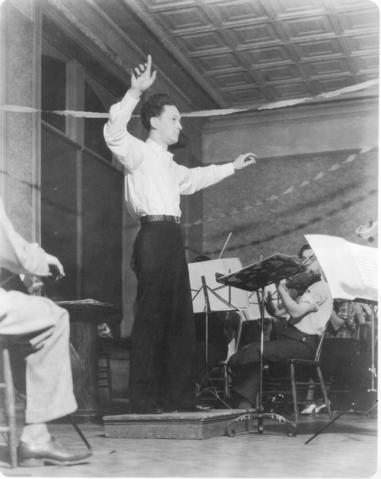Identity elements
Reference code
Name and location of repository
Level of description
Item
Title
R7-1
Date(s)
- 1935 (Creation)
Extent
Name of creator
Content and structure elements
Scope and content
ca. 1935. Eugene Linden conducting at a rehearsal of the Tacoma Philharmonic Orchestra. This is possibly taken at the rehearsal space provided at the Scottish Rite cathedral at 5 So. G St. At age 21, when he was barely old enough to vote, Eugene Linden founded the Tacoma Philharmonic Orchestra. He was already a seasoned conductor, having begun conducting with the Portland Oregon Junior Symphony at the age of 17. At the ripe age of 21, he cast around for a city where he could start his own orchestra and settled on Tacoma. The city was large enough to support an orchestra, had enough musical talent and had an appreciative artistic populace. However, no one had ever succeeded in establishing a symphony here. He arrived penniless and with no powerful supporters but with hard work and a zeal that captured the devotion of the musicians, he established a core group of 40 musicians and presented a concert 6 months after his arrival. The Philharmonic had many successful seasons in the Jason Lee auditorium and in 1938 moved the concerts into the Temple Theatre. The move proved to be a costly one and the year ended in a financial loss. The concert year 1938-1939 saw the organization out of existence as an orchestra as they struggled to erase the debt. In the fall of 1939, Mr. Linden was summoned from the Los Angeles area where he was conducting the Long Beach symphony and concerts were started once again at Jason Lee. During the war years, due to the loyalty of Mr. Linden and his musicians, Tacoma was one of the few cities of her size that maintained their symphony orchestra. In fact, 1945-46 saw the highest number of members in its history. (TNT 2-28-1934; TDL 3/11/1934; TNT 2/24/1946)
Tacoma Philharmonic Orchestra (Tacoma); Linden, Eugene; Conductors; Orchestras--Tacoma--1930-1940;

